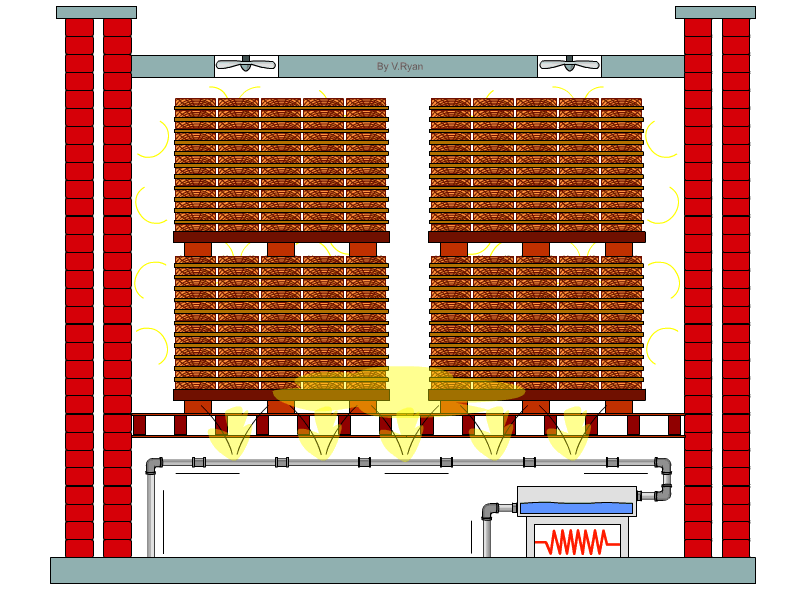| CLICK HERE FOR INDEX PAGE |
| THE PREPARATION OF TIMBER - KILN SEASONING |
| V. Ryan © 2011 |
| PDF FILE - CLICK HERE FOR PRINTABLE WORKSHEET |
|
The seasoning time for wood can be reduced considerably
through the use of a specialist kiln. Often air seasoning and kiln
seasoning are used together. There are different types of kiln. A ‘forced
draught’ kiln is seen below. |
 |
| The timber remains in the kiln for two to
five days, depending on the species of tree and the time of year that the
tree was felled (Spring, Autumn or Winter). Softwoods season more rapidly
in the kiln, compared to hardwoods. This is due to their differences in
cell structure Research is ongoing in to how to season timber, using the minimum of energy and causing as little damage to the timber as possible. Other forms of seasoning are: SOLAR SEASONING - A combination of air and kiln seasoning. MICROWAVE SEASONING - Microwave energy is directed at the timber, driving out the excess moisture. This technique is used in Canada, in some small scale commercial operations. CHEMICAL SEASONING: This is a specialist technique. It involves submerging the ‘green’ wood in a hydroscopic chemical for twenty four hours. The chemical slows down the rate of water loss, helping to reduce damage such as warping, during the air drying stage. |
| CLICK HERE FOR RESISTANT MATERIALS INDEX PAGE |